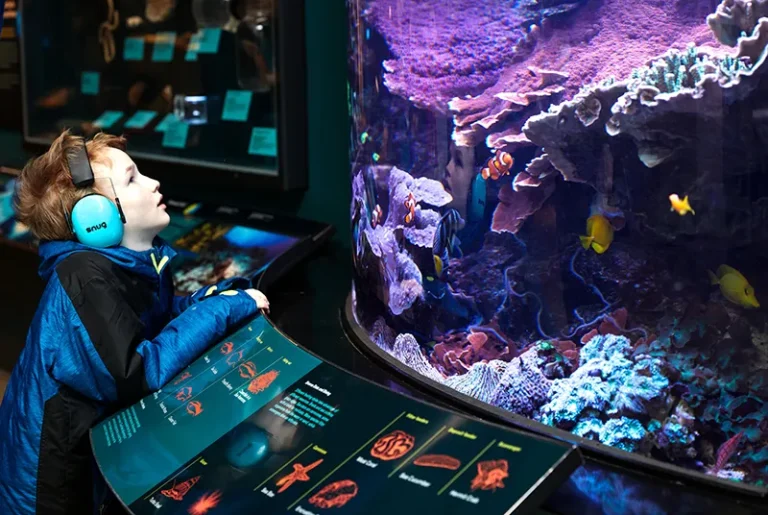Travel is one of life’s pure joys new sights, sounds, tastes, and experiences. But for the sensory-sensitive, such as those on the autism spectrum or with sensory processing disorder, travel all too often can be daunting. Sensory overload from loud sounds, bright lights, crowded spaces, or novel environments can all too quickly transform what should be a fantasy vacation into an anxiety-filled nightmare.
Thankfully, more destinations, accommodations, and travel services are becoming aware of sensory sensitivities and adapting to meet those needs. In this guide, you’ll find practical tips for managing sensory challenges on the road, plus a list of top destinations known for their sensory-friendly environments.
Understanding Sensory Sensitivities in Travel
Sensory sensitivities imply that some stimuli such as loud sounds, bright lights or flashing lights, potent odors, or even certain textures might make one uncomfortable or distressed. During travel, stimuli are amplified, ranging from airport announcements and busy roads to strange foods and crowded sites.
Coping with the challenges entails preparation, selecting proper destinations, and sometimes negotiating your needs. With proper strategies, traveling is not only feasible but enjoyable and fulfilling.
Some Necessary Travel Tips for Sensory Sensitivities
1. Plan Ahead and Do Your Homework
- Seek Out Sensory-Friendly Facilities: Certain airports, museums, and tourist sites have quiet rooms or sensory-friendly times. Check websites or call in advance.
- Select Off-Peak Traveling Times: Early morning or weekday travel may translate to fewer crowds and less noise.
- Book Accommodations Strategically: Opt for hotels or rentals that have quiet rooms, blackout curtains, and minimal background noise.
2. Develop a Sensory Toolkit
- Noise-Canceling Headphones or Earplugs: To filter out deafening sounds.
- Sunglasses or Visors: To filter out blinding lighting and glare.
- Fidget Toys or Comfort Items: To help calm and provide kinesthetic comfort.
- Essential Oils or Calming Scents: For familiar scents that may be calming.
- Snacks and Water: To keep energy levels up and prevent hunger-based irritability.
3. Communicate Your Needs
- Advise airlines, hotels, and tour operators of sensory sensitivities when making a reservation. Some provide accommodations or special support.
- Have a medical or sensory needs card that explains your sensitivities to carry as a backup if needed.
4. Use Technology to Your Advantage
- Apps like “Quiet Spaces” or “Too Noisy” can help find quiet spaces or even sound measure.
- Get apps of guided meditation or calming music for overload times.
5. Mindful Transitions
- Give time between activities to rest and relax.
- Use gentle schedules and cues to transition gently from one space to another.
6. Flexible and Compassionate to Yourself
- Plans sometimes need to be altered; it’s alright.
- Remember that rest is part of travel.
Destinations That Accommodate Sensory Sensitivities
Although sensory-friendly travel is gaining popularity globally, certain places become popular due to their emphasis on accessibility, tranquility, and inclusive experiences.
1. Orlando, Florida, USA
- With Disney World and Universal Studios, Orlando was the first destination to introduce Sensory-Friendly Days and Quiet Rooms within their parks.
- Autism Access Service (AAS) passes to enable shorter waits and fewer sensory experiences with people are provided by Disney.
The majority of close-by hotels include sensory kits as well as quiet areas.
2. Copenhagen, Denmark
- Famous for its affordable public transport and serene city layout.
- Provides Sensory-Friendly Tours and museums with quiet times.
- The urban parks and open spaces are spacious, green, and peaceful, ideal for a break.
3. Tokyo, Japan
- Even though it is a busy city, Tokyo provides sensory-friendly train cars at specific times and several public areas have quiet areas.
- Museums such as the Ghibli Museum restrict the number of visitors to prevent congestion.
- Sensory-friendly restaurants and relaxation areas are offered.
4. Reykjavik, Iceland
- With natural scenery and serene ambiance.
- The external attractions of Iceland such as geothermal pools and national parks are not loud but filled with visual comfort.
- The majority of the hotels accommodate small groups and individuals who are eager for some peaceful sensory experience.
5. Melbourne, Australia
- With sensory-friendly events known as ‘sensory Sundays’ in galleries and museums.
- The majority of the cafes and stores have quiet times or areas.
- Public transportation is well organized and typically less crowded off-peak times.
6. Lisbon, Portugal
- Features calm, less touristy neighborhoods with more laid-back environments.
- The city’s many parks and beach walks offer serene retreats from city sounds.
- Some cultural venues provide sensory-friendly performances.
Sensory-Friendly Accommodations and Airlines
- Hotels: Chains like Marriott, Hilton, and Hyatt are increasingly training staff on sensory matters and offer quiet rooms, hypoallergenic linens, and sensory kits on request.
- Airlines: The majority of major carriers, including Delta, British Airways, and Emirates, provide special accommodations for sensory-sensitive flyers pre-boarding, quiet cabins, etc.
With the right planning and choices, traveling with sensory sensitivities is completely doable. The secret is understanding what your personal requirements are, planning in advance, and selecting destinations and services that respect and accommodate those needs.
Sensory-friendly travel is a new niche that’s making the world more accessible and beautiful for all. Whether you yearn for the peaceful isolation of Iceland’s nature or the planned sensory access of Orlando’s theme parks, the world has something lovely for you.





Leave a Comment